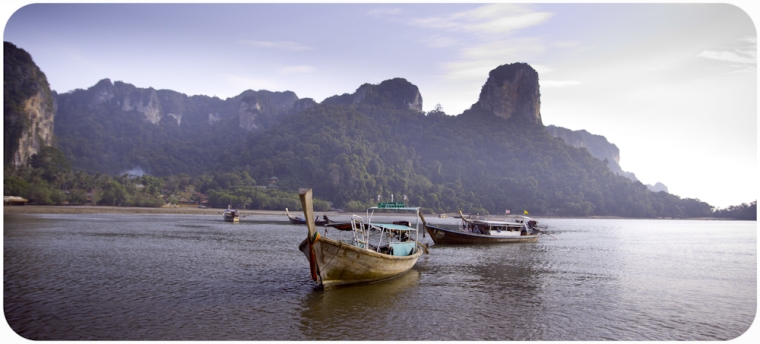After being bewitched by the charms of Chiang Mai, we were excited to see more of Northern Thailand. Pai had been touted as a mystical chillout town, nestled in the Northern mountains, but we had also heard reports of its transformation into a mini Khao-San-Rd-style site of Western debauchery. However, on arrival we saw no evidence of this, as it really just comprised a few quiet, dusty streets, some beautiful mountain views and a handful of quirky cafes and bars. Our little bungalow at Mr Jan’s was set back in a picturesque and tranquil garden, and for the price of 200 baht a night we were ecstatic with it.
There are plenty of adventure companies offering different kayaking and rafting treks, but after only a couple of hours in this pretty little town, our desire to do anything more demanding than stroll around melted into the refreshingly cool atmosphere. Pai is really a wonderful place to go to take a holiday from travelling. We spent three seriously chilled days just walking and biking around the stunning countryside, and sampling the fare at a number of charming and afordable bakeries and cafes. Our one adventure to find the Hot Springs ended in surprise when we were shown to an outdoor jacuzzi-style bath, just big enough for the two of us.
After leaving Pai seriously relaxed, we made our way to Chiang Rai, the last stop before our border crossing into Laos. Chiang Rai is a well established cultural trekking base, so that was our main reason for putting it on the itinerary, but after researching our options, we decided against any Hill Tribe visits. Like the Thai Elephant situation, the Hill Tribes are also an ethically contentious tourist drawcard, as many are forced to wear traditional clothing and behave in uncharacteristic ways in order give tourists the ‘authentic’ experience they desire. In the case of the Long Neck Karen Tribe, women and young girls are payed small sums (upon which they depend) to continue the harmful neck-stretching tradition that is no longer practiced by the greater Karen people. Unfortunately, we simply could not afford to do a trek with the companies that work constructively with the communities, battling against the ‘human zoo’ factors that seem to characterize much of Thailand’s cultural tourism. Instead, we decided to do a bit of a D.I.Y heritage tour, which gave us a great opportunity to get familiar with Thailand’s surprisingly efficient public bus services (which we hadn’t used since Bangkok).
First on the list was Wat Rong Khun, or The White Temple, a mesmerizing construction on the outskirts of Chiang Rai. Completed relatively recently, it was designed to be one of the most beautiful and unique temples in Thailand, and it is certainly a contender in this regard. Compared to all the other temples we’d seen already, what it lacked in history, it made up for in bizarre unconventionality. The entrance was lined with replicas from the Predator film and tree branches dripping with decapitated heads, while the main bridge lead us over an hauntingly conceived pit of damned souls. All of this stood in a strange juxtaposition with the purity and brilliance of the temple, itself. The bright white facade is almost blinding to look at, thanks to the addition of several mosiac mirrors, and the detail of even the most minute elements make it a wonder to behold. We happily explored all its little nooks and crannies, making sure we didn’t miss anything.
From there, it was another couple of busses to Chiang Saen, the ancient city of the North. Dotted in amongst the rather oridnary buildings of this sleepy riverside town, are remnants of a city that was once the lifeblood of the Lanna Kingdom. Tall mossy stupas, crumbling red brick walls, and eerily quiet ruins punctuate the main roads, making the surrounding modern structures look quite out of place. Once we had taken in the bigger historical sites, it was back on a tuk-tuk for the twenty minute drive to the golden triangle, where one can stand in Thailand and look out overthe river confluence at both Myanmar and Laos. It remains famous because of the area’s significance in the frontier days of the poppy trade. Apparently all that is in the past now. We appreciated an overpriced beer at the oddly swanky hotel while watching the boat traffic between the tree countries and then, on the way back, happened to run across a drug smuggling boat that had been brought down in a hail of gunfire by the Thai police.
Getting back to Chiang Rai was a breeze on yet another rickety, but reliable, public bus, and by the time we sat down to have dinner at the night bazaar, we calculated that we had saved ourselves at least 700Baht each by deciding to do the sights ourselves rather than booking a tour; not a bad day’s work fora couple of budgeteers. After a month and half in Thailand, we knew there was still so much to do and see, but Laos was beckoning us and we couldn’t wait to experience it.


















































































































